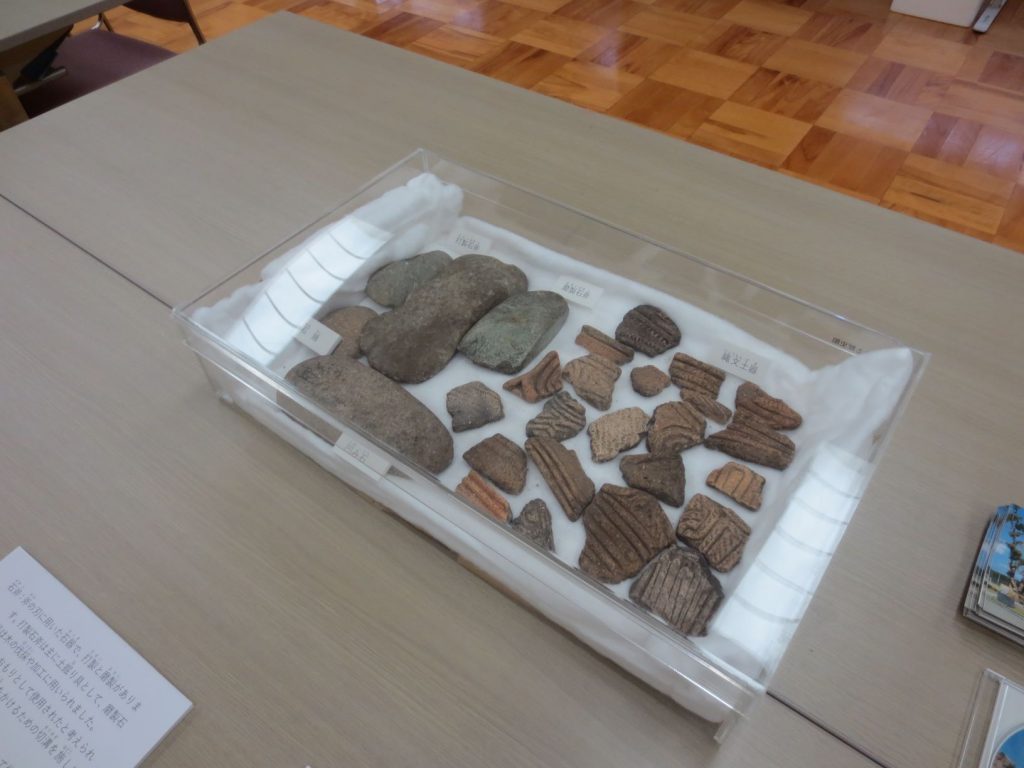7 刈安・上野堂畑遺跡(縄文遺跡) KariyasuーUwano Doubatake remains (Jomon remains)
津幡町倶利伽羅地区の上野(うわの)区から刈安(かりやす)区にかけて、通称「堂畑(どうばたけ)」と呼ばれる畑地に、縄文(じょうもん)時代の遺跡が発見されましたが、現在は水田として整備され、その痕跡は全くありません。
1905(明治38)年に畑地を開墾(かいこん)した時に、多数の縄文土器の破片や石斧(せきふ)、石鏃(せきぞく)、石棒(せきぼう)、人骨が出土しました。その後、1921(大正10)年に福井の郷土史家、上田三平(うえだ・さんぺい)が石川県の史蹟名勝天然記念物の調査のために来県され、翌1922(大正11)年4月24・25日の2日間に渡り、石川県下最初の実地試掘(しくつ)調査が行われました。
石斧:斧(おの)の刃に用いた石器。打製と磨製とがある。日本では旧石器時代から弥生時代まで見られる。
石鏃:矢じりとして用いられた石器。日本では縄文・弥生時代に見られる。
石棒:縄文時代、棒状の一端または両端に丸く膨らみをつけた磨製石器。儀礼・祭祀(さいし)用と考えられている。(津幡町観光ガイドより)
津幡町観光ガイドホームページより
Ruins from the Jomon period have been discovered in a field commonly called “Doubatake” in the Kurikara district of Tsubata Town, from Ueno to Kariyasu. In 1905, when the field was reclaimed, many pieces of Jomon pottery, stone axes, stone arrowheads, stone sticks, and human bones were unearthed. Later, in 1921, Fukui local historian Sanpei Ueda came to Ishikawa to conduct a survey of the area as a historical site, a place of scenic beauty, and a natural monument, and the following year, on April 24 and 25, 1922, the first field trial excavation was conducted in Ishikawa Prefecture.
Stone axe: A stone axe used as the blade of an axe, and can be either hammered or polished. In Japan, it is found from the Paleolithic period to the Yayoi period.
Stone arrowhead: A stone tool used as an arrowhead. In Japan, it is found in the Jomon and Yayoi periods.
Stone stick: A polished stone tool with a round bulge at one or both ends of a stick shape. It is thought to have been used for rituals and ceremonies. (From Tsubata Town Travel Guide)
①遺跡発掘品 Excavation product of remains

②発掘品の説明 Explanation of the excavation product

